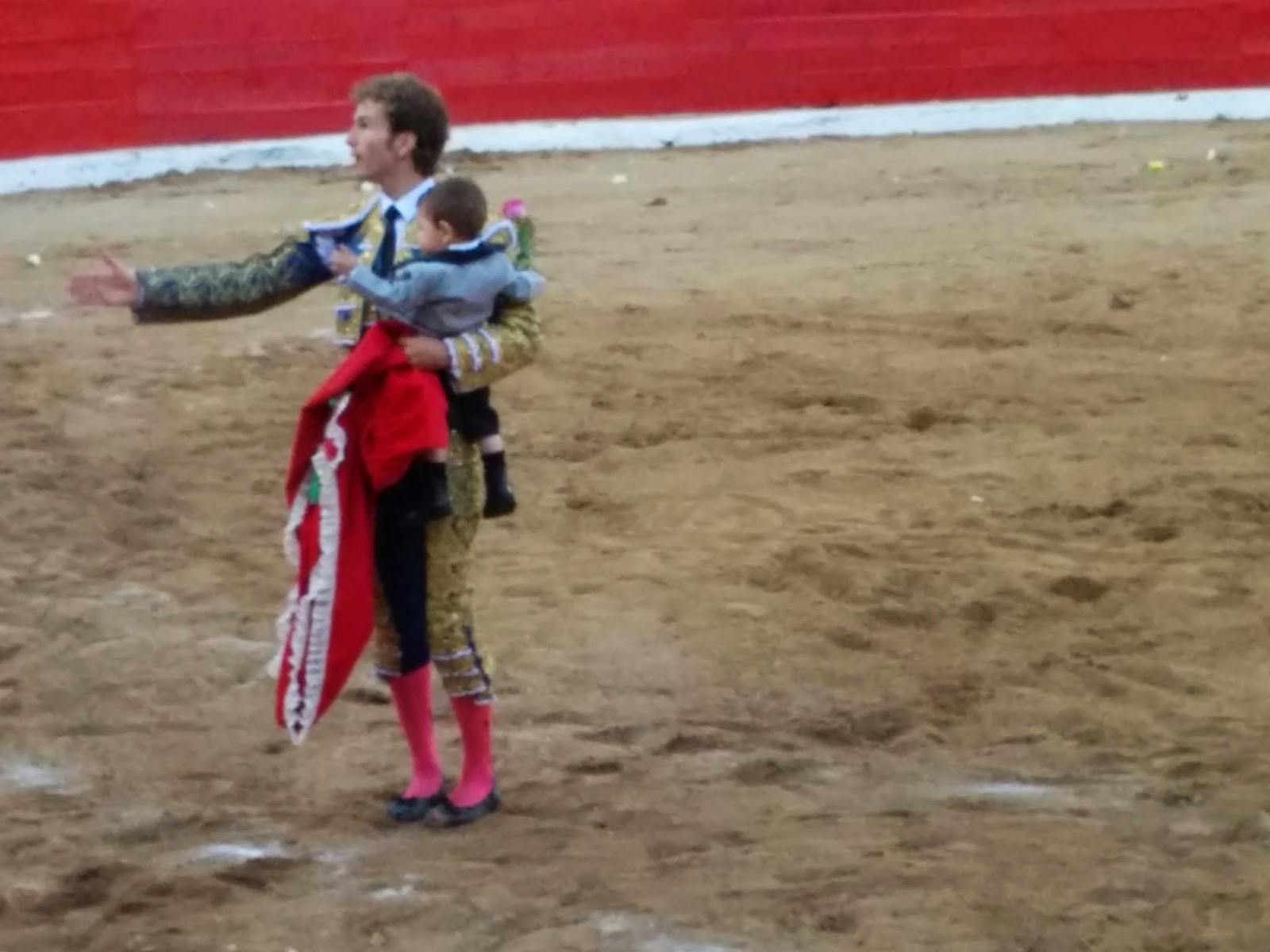Audio file: http://www.zenzebra.net/podcasts/motivation1-nash.mp3
 |
| Bullfighter & son. What motivates people? Each person is different. (photo taken in San Miguel El Alto, Jalisco, MX, September 2014) |
• Maslow's Hierarchy of Needs
• Herzberg's Motivation / Hygiene (two-factor) Theory
• McClelland's Need for Achievement Theory
Because motivation is so highly individualistic, and it can vary so dramatically between people, it is important to consider a wide range of explanations and mechanisms. The results are important not only for optimizing satisfaction (and performance) in the workplace, but also in developing a dynamic organization that emphasizes constant, continual, and outcome-focused learning and skills development. It then follows that there can be a predictive relationship in performance.
Maslow's Hierarchy of Needs
Maslow's Hierarchy of Needs (1954) posits that there are five ascending levels of needs, and if a lower-level need is not met, then the individual will essentially stay "stuck" there and be unable to ascend to the highest levels (Ego and Self-Actualization).
1. Physiological needs. Food, water, shelter, and sex are survival needs and all humans must possess them. If they do not, all their waking moments will be obsessed with obtaining them, which will preclude the ability to achieve higher order levels of existence.
2. Safety needs: Humans need to feel protected against danger, threats and deprivation. This applies not only to physical needs, but also job security.
3. Social needs: Humans need to give and receive love, friendship, and affection. They need to feel they are a part of an accepting group. If the first two levels of needs are being satisfied, then an individual will start to be aware of a lack of friends or associates.
4. Ego needs: If the other needs are being met, humans will turn to their ego needs and will seek achievement, status, recognition from society and associates / peers.
5. Self-actualization needs: These are the highest levels of needs and they occur if the previous four levels are satisfied. Self-actualization relates to the individual's own quest to realize what he or she perceives as his or her potential.
Although it's true that one cannot really focus on self-actualization without meeting the lower-order needs, not everyone will ever be interested in the higher level needs. It really depends on their level of aspiration and attitudes / beliefs.
Herzberg's Motivation Hygiene Theory.
According to Herzberg's findings, motivation to accomplish work is a factor of satisfiers and dissatisfiers.
• Satisfiers include achievement, recognition, the work itself, advancement, growth, responsibility.
• Dissatisfiers include company policy, supervision, working conditions, interpersonal relations, salary, status, job security, and personal life.
For Herzberg, an organization can do a great deal to improve the "hygiene" which is to say that "hygiene" refers to removing as many negative elements as possible. So, Herzberg devised a process:
1. Identify the type of hygiene to use and eliminate toxic elements (often are extrinsic factors)
2. Enhance the meaningfulness of the job itself, make people feel responsible for the outcomes, and give feedback (often are intrinsic factors)
McClelland's Need for Achievement Theory
According to McClelland's research, people are motivated in the workplace by a need to achieve and also to receive recognition for their work.
Important factors in the need to achieve include the ability to define what it means to achieve, and that achievement is meaningful, perceived, and recognized by people whose opinions are meaningful to the individual.
1. Achievement involves personal responsibility (and thus, clear credit for work done)
2. Successful and continuous achievers know how to set goals that are not too high, but which are achievable (and tend to be moderate). They also take "calculated risks" and thus their risk-taking behavior is carefully modulated
3. It is important to give concrete feedback in order to reinforce the fact that the achievement has been realized, and also to improve processes in the future (to assure continuing achievement).
Relating the Theories
When one takes a look at the three main theories, it's clear that they involve many of the same concerns; namely, achievement and also the perception of how and when achievement is accomplished.
Maslow and Herzberg's theories work well together to discuss and explain the conditions that must be present in order to motivate individuals and also to set the stage for learning and performance.
Both Herzberg and McClelland include the need for achievement and they look at them as basically intrinsic motivators, which means that in order to motivate, efforts have to be expended that will create feedback loops as well as reinforcement and self-perpetuating dynamics that tie to achievement, recognition of achievement, and eagerness to achieve again (and thus repeat the positive experience).
References:
Herzberg, F. (1966). Work and the Nature of Man. New York: Thomas Y. Crowell Co.
Maslow, A. H. (1954). Motivation and Personality. New York: Harper and Brothers,.
McClelland, D. C. and Johnson, E. W. (1984). Learning to Achieve. Glenview, IL: Scott, Forsman, & Co.
Pardee, R. L. (1990). Motivation Theories of Maslow, Herzberg, McGregor, and McClelland. ERIC
Blog post authored by: Susan Smith Nash, Ph.D.
 |
| Motivation requires a multi-pronged approach. |


